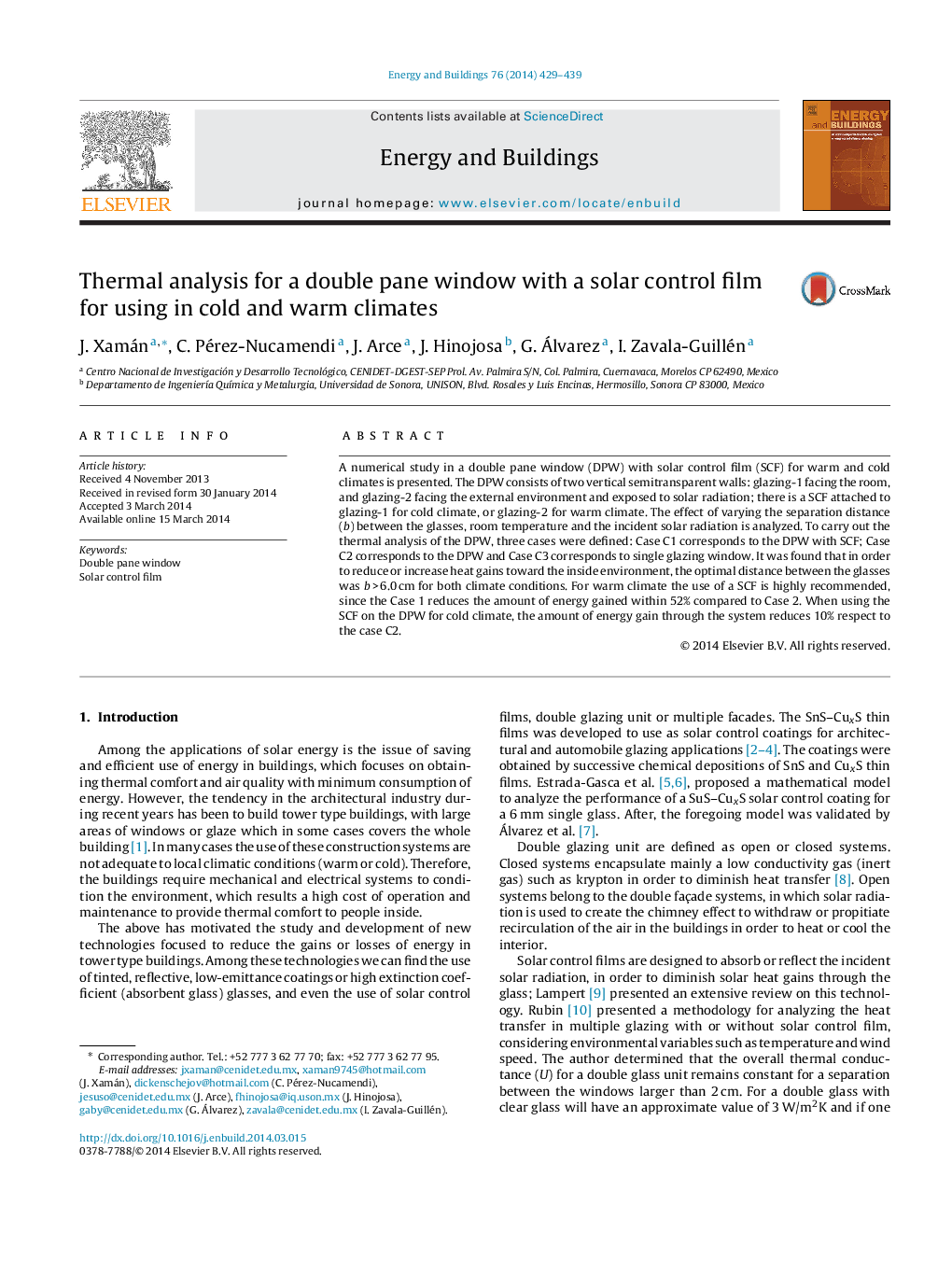| Article ID | Journal | Published Year | Pages | File Type |
|---|---|---|---|---|
| 6733838 | Energy and Buildings | 2014 | 11 Pages |
Abstract
A numerical study in a double pane window (DPW) with solar control film (SCF) for warm and cold climates is presented. The DPW consists of two vertical semitransparent walls: glazing-1 facing the room, and glazing-2 facing the external environment and exposed to solar radiation; there is a SCF attached to glazing-1 for cold climate, or glazing-2 for warm climate. The effect of varying the separation distance (b) between the glasses, room temperature and the incident solar radiation is analyzed. To carry out the thermal analysis of the DPW, three cases were defined: Case C1 corresponds to the DPW with SCF; Case C2 corresponds to the DPW and Case C3 corresponds to single glazing window. It was found that in order to reduce or increase heat gains toward the inside environment, the optimal distance between the glasses was b > 6.0 cm for both climate conditions. For warm climate the use of a SCF is highly recommended, since the Case 1 reduces the amount of energy gained within 52% compared to Case 2. When using the SCF on the DPW for cold climate, the amount of energy gain through the system reduces 10% respect to the case C2.
Keywords
Related Topics
Physical Sciences and Engineering
Energy
Renewable Energy, Sustainability and the Environment
Authors
J. Xamán, C. Pérez-Nucamendi, J. Arce, J. Hinojosa, G. Álvarez, I. Zavala-Guillén,
